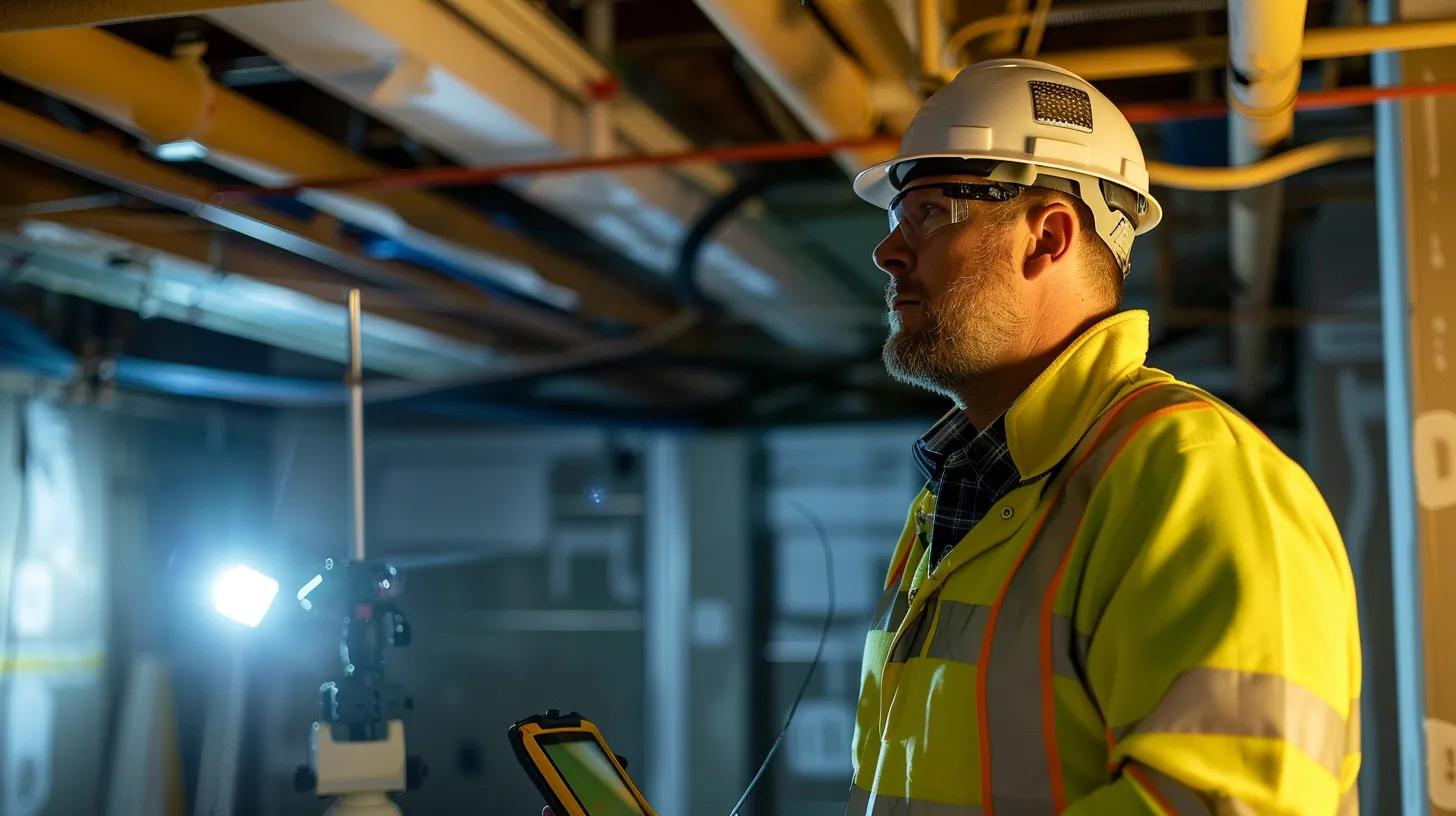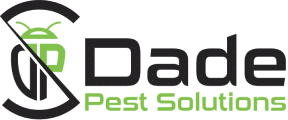5 Essential Tips for Choosing the Best WDO Inspection Service in Your Area
Introduction
When it comes to protecting your home, ensuring that wood-destroying organisms (WDOs) do not compromise your property is essential. A comprehensive WDO inspection is a critical step in identifying and mitigating potential risks that could lead to expensive structural damage. Homeowners face challenges from termite infestations, beetle damage, and other organisms that weaken wooden structures. With rising awareness of these risks, selecting the best WDO inspection service in your area is crucial. This article provides a step-by-step guide to help you understand what constitutes a high-quality WDO inspection, how to verify the credentials of the service provider, the advanced tools and techniques used during an inspection, and how to compare service packages.
The article presents expert insights into the inspection process so that homeowners, property managers, and buyers can make informed decisions. It discusses the significance of inspections, the importance of certified professionals, and the state-of-the-art technologies available. Additionally, it offers guidance on how to interpret detailed inspection reports and when to follow up with further pest control measures. Written from the perspective of a pest control professional, the article maintains clear language appropriate for an 8th- to 9th-grade reading level while naturally incorporating terms such as mold, roof, pest control service, and pest prevention.
Key Takeaways
- A quality WDO inspection protects your home from structural damage.
- Verifying inspectors’ credentials ensures reliability in the final inspection report.
- Advanced tools like moisture meters and thermal imaging enhance accuracy, but visual inspections remain important.
- Comparing costs and service packages helps balance budget with comprehensive coverage.
- Effective communication and follow-up support are key to ongoing property protection.
What Is a WDO Inspection and Why Is It Important?
A WDO inspection is a specialized assessment performed by qualified professionals to detect wood-destroying organisms in a property. It safeguards your home by identifying signs of termite infestations, carpenter ant activity, and other harmful organisms that affect wood integrity. The process includes a thorough visual evaluation, technical assessments, and sometimes laboratory analysis to assess wood degradation.
What Does a Wood Destroying Organism Inspection Include?
A comprehensive inspection covers both the interior and exterior of the home. Inspectors look for indicators such as mud tubes, damaged wood surfaces, hollow tap areas, and moisture signs. Besides a visual survey, they may use moisture meters to detect hidden dampness and thermal imaging to spot temperature anomalies indicating concealed infestations.
Inspectors also examine the surrounding environment—including the foundation, roof systems, and nearby vegetation—to determine any vulnerabilities. Detailed documentation with photographs, measurements, and location data is compiled into an inspection report that outlines issues and provides recommendations for repairs, treatments, and preventive measures. Such reports are invaluable for maintaining home integrity and are often required during home sales.
Which Wood Destroying Organisms Are Commonly Inspected?
Common organisms include termites, carpenter ants, powder-post beetles, and wood decay fungi. Termites are particularly dangerous due to their rapid colony growth and wood consumption. Carpenter ants create galleries that can weaken supports, while powder-post beetles gradually tunnel through wood. Wood decay fungi break down cellulose, making wood structurally unsound. Inspectors are trained to spot signs like mud tubes, small exit holes, fine powdery debris, and discolored or spongy wood.
How Does a WDO Inspection Protect Your Home Investment?
Early detection through WDO inspections allows homeowners to address infestations before significant damage occurs, thereby preventing expensive repairs. A detailed inspection report documents the condition of the property and can serve as a negotiating tool during transactions or insurance claims. Additionally, the insights provided guide homeowners on essential maintenance and pest prevention measures, ultimately preserving the property’s value and safety.
How Do I Verify the Credentials of a WDO Inspection Service?

Verifying the credentials of a WDO inspection service is critical to ensure the accuracy of the inspection report. Only licensed and certified inspectors can guarantee adherence to industry standards. Experienced inspectors possess certifications from recognized bodies and frequently update their skills through ongoing training.
Why Are Certified Inspectors Essential for Accurate WDO Inspections?
Certified inspectors have proven expertise and follow strict professional protocols. They undergo rigorous testing on pest detection methods and use advanced diagnostic equipment such as calibrated moisture meters to provide precise assessments. Their credentials assure homeowners that the inspection is based on scientifically accepted methods and updated practices.
What Local Expertise Should Inspectors Have?
Inspectors with local expertise understand the regional climate, building styles, and common pests, all critical for accurate assessments. Local inspectors can better identify threats like termite prevalence in humid, fluctuating climates. They also maintain relationships with reputable pest control companies and are familiar with local building codes, which is beneficial for report accuracy and subsequent home transactions.
How Can Customer Reviews and Testimonials Help in Choosing?
Customer reviews offer insights into an inspector’s communication skills, thoroughness, and overall effectiveness. Positive feedback regarding punctuality, clear documentation, and follow-up support indicates a reliable service provider. Conversely, recurring complaints may signal issues in service quality. Online listings and references can help verify the inspector’s reputation in the community.
What Advanced Tools and Techniques Should a Quality WDO Inspection Include?
Modern WDO inspections blend traditional methods with advanced technology to ensure complete coverage. While visual inspection remains essential, advanced tools significantly enhance inspection precision and provide quantifiable data.
How Do Moisture Meters and Thermal Imaging Improve Inspection Accuracy?
Moisture meters measure the moisture content in wood and identify areas susceptible to termite and fungal attacks. High moisture readings often indicate water intrusion or prolonged dampness. Thermal imaging cameras detect temperature variations that reveal hidden infestations, particularly behind walls or under floors. Together, these tools help target problem areas accurately and support the visual findings with measurable data.
Why Is Visual Inspection Still Crucial Despite Technology?
Despite technological advances, visual inspections allow experts to notice subtle cues such as wood discoloration, mud tubes, and structural deformities that machines may miss. Visual assessments help contextualize data from instruments; for example, confirming whether high moisture levels are due to benign factors or serious leaks. This combined approach ensures the final inspection report is both accurate and actionable.
What Should a Detailed WDO Inspection Report Contain?
A quality inspection report documents all findings with photographic evidence, precise measurements, and location markers. Essential components include: – An executive summary outlining the property’s overall condition. – Detailed descriptions of detected infestations including type, extent of damage, and affected areas. – Quantitative data from moisture meters and thermal imaging. – Recommendations for immediate remediation and preventive maintenance. – A timeline for follow-up inspections and necessary treatments.
The report is written in accessible language to help homeowners understand the issues and take appropriate action.
How Do I Compare Costs and Services Among WDO Inspection Providers?

Homeowners must balance cost with quality when choosing a WDO inspection service. It is important to ensure that even the lowest-price option covers all critical components of an inspection, or that any additional cost is justified by improved comprehensiveness and expertise.
What Factors Influence the Cost of a WDO Inspection?
Key cost factors include: – Property Size: Larger homes require more time. – Property Age: Older buildings may need more detailed scrutiny. – Inspection Complexity: Multi-story homes or those with extensive landscaping can increase inspection time. – Advanced Tools: Use of equipment like thermal imaging and moisture meters adds value. – Local Market Rates: Prices can vary by region due to labor costs. – Certification and Expertise: Highly certified inspectors may charge more for their advanced skills. – Additional Services: Bundled packages may include follow-up inspections or treatment options.
Request detailed quotes to break down these costs for easier comparison.
How to Evaluate Service Packages and Additional Offerings?
Examine what each service package includes—basic visual inspections versus comprehensive assessments with advanced technology, detailed reporting, and warranty support. Consider additional offerings such as free termite inspections, emergency consultations, or bundled pest control services. Customer testimonials and detailed service menus can help gauge whether the package meets your needs.
When Is It Worth Paying More for a Comprehensive Inspection?
A comprehensive inspection is especially valuable if the property is in a high-risk area or has shown signs of trouble. Premium services can detect issues early, potentially saving thousands in repair costs. Detailed documentation from a comprehensive inspection can also be crucial during property transactions or insurance claims, making the extra investment worthwhile.
Where Can I Find Reliable Local WDO Inspection Services?
To find a reliable WDO inspection service, use both online reviews and local business listings. Digital platforms provide instant access to customer experiences and insights into the quality and expertise of local service providers.
How to Use Online Resources and Local Business Listings Effectively?
Check Google Business listings, Yelp, and social media for customer reviews that comment on the thoroughness and clarity of the inspection process. Local directories like the Better Business Bureau (BBB) offer formal ratings and customer complaint histories. Also, verify whether the service is listed in professional associations related to pest control and home inspections.
What Questions Should I Ask Before Booking a WDO Inspection?
Ask targeted questions such as: – What certifications does the inspector hold and how many years of experience do they have? – Which tools and methods are used during the inspection (e.g., thermal imaging, moisture measurements)? – What is the expected timeline for the inspection report? – Is there follow-up support or a warranty on the findings? – Can they provide references or examples of previous work?
These questions help clarify the level of service offered and ensure that your investment is protected.
How Do I Schedule and Prepare for a WDO Inspection?
Scheduling an inspection typically involves contacting providers by phone or through their websites. Prepare by ensuring that areas like crawl spaces, attics, basements, and exterior foundations are easily accessible. Make a list of concerns or areas where prior damage was observed, and provide any available property blueprints or remodeling records. This preparation facilitates a thorough and accurate inspection.
What Are the Signs of a Trusted WDO Inspection Service?

A reliable WDO inspection service is characterized by transparent communication, a robust follow-up plan, and clear guarantees or warranties regarding their work. Such providers openly share their inspection protocols and post-inspection support plans.
How Does Transparent Communication Reflect Service Quality?
Transparent communication means receiving clear, detailed explanations of the inspection process and the report findings. A trustworthy service provider explains complex details in simple terms and responds promptly to inquiries. Upfront disclosure of fees without hidden charges further builds trust.
Why Is a Follow-Up Plan Important After the Inspection?
A follow-up plan outlines the next steps for addressing any detected issues. This plan may include recommendations for treatments, periodic re-inspections, or remedial actions. Some providers even offer complimentary re-inspections after a set period if treatment has not been pursued. This proactive approach ensures ongoing oversight of your property’s condition.
What Guarantees or Warranties Should I Expect?
A high-quality service typically comes with guarantees or warranties such as a promise to re-inspect at no additional cost if significant pest activity is detected shortly after the initial inspection. These written warranties underscore the provider’s confidence and offer homeowners peace of mind.
How Can I Use WDO Inspection Reports to Protect My Property?
WDO inspection reports are valuable diagnostic tools and strategic blueprints for property maintenance. They provide detailed insights into the condition of wooden structures and offer recommendations to prevent future damage.
How to Interpret Findings and Recommendations in the Report?
Inspect reports usually start with an executive summary followed by detailed observations for each area of the home. Each finding is supported by photographic evidence, measurements, and clear descriptions. The report should detail recommended actions like targeted treatments or repairs and may include a risk assessment indicating whether the damage is localized or widespread. Homeowners should feel free to ask inspectors for clarification on any aspect of the report.
When Should I Contact Pest Control Professionals Based on the Report?
If the report shows signs of active infestation or extensive damage, it is important to contact certified pest control professionals immediately. Even in cases of minor infestation, proactive follow-up treatments can prevent further deterioration. Prioritize any recommendations for structural repairs or additional testing to avoid larger issues later.
How Often Should WDO Inspections Be Scheduled?
Routine inspections are generally recommended annually, particularly in regions with high humidity or heavy rainfall. For properties with previous issues or those located in high-risk areas, biannual inspections might be advisable. Inspections are also recommended before purchasing a property or after significant renovations, and some insurance companies may require regular inspections as part of their policy conditions.
Table: Comparison of WDO Inspection Cost Factors
Below is a table summarizing the factors that influence the cost of a WDO inspection along with their potential impact on the overall price.
Before hiring a service, request a detailed quote that itemizes these factors and compare quotes from several providers to ensure you get the best value.
List: Tips for Evaluating Local WDO Inspection Services
Consider these essential tips when evaluating local WDO inspection services:
- Check for Certification and Licensing – Confirm that the inspector is certified by a recognized organization.
- Review Customer Feedback – Read reviews on platforms like Google, Yelp, or BBB to assess satisfaction levels.
- Request a Detailed Quote – Ensure the quote itemizes costs and services.
- Inquire About Advanced Tools – Ask if the inspection uses modern technologies such as thermal imaging and moisture meters.
- Verify Local Experience – Choose inspectors familiar with local climates and regional pest behavior.
- Check for Follow-Up Support – Ensure the service offers post-inspection follow-up and warranty on findings.
- Compare Service Packages – Evaluate whether the offered packages meet your specific property needs.
Table: Essential Tools and Techniques in WDO Inspections
Ensure the service provider uses a combination of these tools for a comprehensive inspection.
List: Advantages of Using Advanced Inspection Techniques
Utilize these advanced techniques to maximize inspection effectiveness:
- Enhanced Accuracy – Tools like thermal imaging and moisture meters reduce the risk of missing hidden infestations.
- Early Problem Detection – Early identification of issues leads to timely intervention and prevention of further damage.
- Comprehensive Coverage – Combining technology with visual inspections ensures all property areas are assessed.
- Data-Driven Reports – Precise readings and photographic documentation support clear treatment recommendations.
- Preventive Maintenance – Early findings help in scheduling maintenance that extends the lifespan of wooden structures.
- Informed Decision Making – Detailed, evidence-based reports empower homeowners to plan repairs and pest control measures.
- Long-Term Savings – Although upfront costs may be higher, advanced techniques can prevent costly future repairs.
Frequently Asked Questions
Q: What is a WDO inspection and why should I get one? A: A WDO inspection is a detailed examination to detect wood-destroying organisms such as termites and carpenter ants. Early detection helps reduce repair costs and protects property value. Additionally, a certified inspection report is often required during property transactions and insurance claims.
Q: How often should I schedule a WDO inspection? A: It is recommended to schedule an annual inspection, especially in high-humidity regions. For properties with prior issues or in high-risk areas, biannual inspections may be advisable. Inspections are also recommended before purchasing a property or after structural renovations.
Q: What should I look for in a WDO inspection report? A: A reliable report should include an executive summary, detailed descriptions of damage or infestations, quantitative data from diagnostic tools, photographic evidence, and clear remediation recommendations written in accessible language.
Q: Are advanced tools like thermal imaging really necessary for a routine inspection? A: Yes, they improve accuracy by revealing hidden issues that may not be visible during a standard visual inspection. These tools provide quantifiable data to support inspection findings.
Q: How can I verify the credentials of a WDO inspection service? A: Verify that the inspector is certified by recognized industry associations, read online customer reviews, request detailed quotes, and ask for references to assess local expertise and reputation.
Q: What actions should I take if my inspection report shows signs of infestation? A: If infestation is detected, contact a certified pest control professional immediately to discuss treatment options and schedule any recommended follow-up inspections.
Q: How do service packages vary among inspection providers? A: Service packages can range from basic visual inspections to comprehensive assessments that include advanced diagnostic tools, detailed reporting, follow-up support, and warranties. Always request a detailed breakdown of costs before making a decision.
Final Thoughts
In conclusion, protecting your home from wood-destroying organisms is essential for preserving its value and structural integrity. A high-quality WDO inspection service provides early detection, enabling timely remediation and preventive maintenance. By verifying inspector credentials, understanding the tools used, and comparing service packages thoroughly, homeowners can make informed decisions that lead to long-term savings and peace of mind. Ultimately, a comprehensive and transparent inspection process is the first step in safeguarding your investment and ensuring a safe, pest-free home.

17 Years of Pest Control Experience Founder and Owner of Dade Pest Solutions Proud Resident of South Florida
Shaun Judy, a dedicated South Florida native, is the founder and driving force behind Dade Pest Solutions. With over 17 years of hands-on experience in the pest control industry, Shaun has built a reputation for reliability, results, and real local knowledge. His journey began with a deep commitment to protecting homes from pests using proven methods and innovative solutions. Raised with a strong work ethic and a passion for service, Shaun treats every property as if it were his own—delivering expert care with a personal touch.

